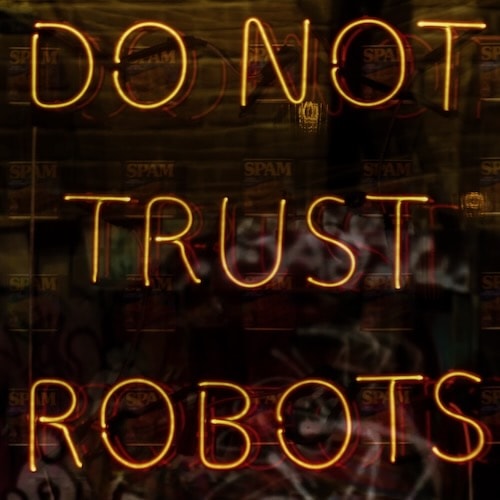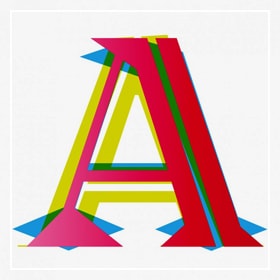This post is the introduction of our thematic thread on Trust, curated by Anna Weichselbraun (University of Vienna), Shaila Seshia Galvin (Geneva Graduate Institute) and Ramah McKay (University of Pennsylvania).
What do we mean when we talk about trust? Contemporary discourses figure trust variously as a problem, an aspiration, an object of intervention, and even something to be dispensed with all together. An abiding social fact, trust appears to nourish not only interpersonal relations but also scales up to the social orders of governance, politics, and publics. Girlfriends and governments as much as experts and executives are concerned with inspiring, maintaining, and growing trust. To do so they implement a wide variety of measures: from communicative reassurances, to certification schemes, technologies of transparency and objectification, and legal measures of accountability and compliance. Despite all these efforts, the Edelman “Trust Barometer,” itself an instrument worthy of examination, notes that trust in government, media, NGOs, and business has dramatically declined since the beginning of the new millennium. And, we observe, blockchain technology is touted by some proponents as necessary for producing trust, while others see its virtue in permitting trustlessness. In the midst of this confusion and supposed crisis of trust we ask: what is trust and what does it do?
What is trust and what does it do?
Contemporary social, political, and economic life demands new ways of thinking about and theorizing trust. We approach trust not directly, but through technologies such as certification, verification, and inspection as well as institutional arrangements such as aid organizations and health care, which promise to be solutions to problems of suspicion, doubt, corruption, and uncertainty. These and related world-making practices constitute our objects of observation (Trouillot 2003; Galvin 2018; Weichselbraun 2019), and we track how they attempt to materialize and stabilize social relations, with the aim of producing what is often
understood or named as trust. We mobilize ethnographic inquiry to study how these technologies, and practices—not unlike more familiar forms of infrastructure (electricity grids, water networks, highways and rail lines)—constitute “dense social, material, aesthetic, and political formations” (Anand, Gupta, and Appel 2018, 3).
Our collaboration brings together scholars within and outside the academy, spanning junior to mid-career stages, as well as MA and PhD students. Across our different essays, we parse the qualities of trust and their modes of production, asking how material objects, bureaucratic and regulatory practices, as well as diverse kinds of technologies—from forensic testing to blockchain—work to configure and condition trust. The settings of our research vary—from the corridors of humanitarian action to the securitized perimeters of wildlife sanctuaries and sugar plantations, from Zoom calls to organic farms in Switzerland and India, and from the digital worlds of Web3 and Facebook livestreams to the clinical environments of covid testing centres.
We parse the qualities of trust and their modes of production, asking how material objects, bureaucratic and regulatory practices, as well as diverse kinds of technologies work to configure and condition trust.
Across these diverse sites, trust emerges as a fragile, situated, often ambivalent and always a relational accomplishment. Sometimes it is built up through the provision of a predictable structure with familiar routines as in Hesse’s analysis of the Covid testing centres in which seemingly superficial changes in the protocol can raise suspicion/doubt in the efficacy of the process. In Billaud’s contribution, the ICRC’s careful work of building trusting relationships in communities victimized by urban violence is undermined by efforts to formally produce “trust” at a different level of the organization through bureaucratic procedures and techniques geared to producing measurable results. And from a Malian sugar plantation, the setting for a global health workshop, Biruk reflects on the need to locate (mis)trust in global health in the material, historical, and infrastructural realities of the
plantation itself.
In this regard, several essays explore the relational dimensions of trust, considering the range of human and nonhuman actants implicated in the work of trust-building. McKay asks how trust is “facilitated and foreclosed” as medicines move across jurisdictional boundaries, from pharmaceutical importers and inspectors, to laboratory testing, to online pharmacies that fill prescriptions for overseas customers. Spurred by a Zoom call about self-managed medication abortion in the US, McKay explores ways that trust in pharmaceuticals is not generated by pharmaceutical regulation itself, but comes to encompass a wide array of human, technological, and political actants. Such an array of human and nonhuman actants are found, too, in McClellan’s essay which examines how recurrent demonstrations of the efficacy of technologies of security and surveillance within a Jordanian wildlife sanctuary prove crucial to establishing and sustaining the trust of both local residents and the
sanctuary’s captive animals.
In a world where crises of trust are proclaimed in things as diverse as political institutions, food, pharmaceuticals, health care, and news, trust can no longer be a rarefied object of scholarly inquiry.
A spatial and relational focus on trust commonly contrasts the proximate and the distant, the personal and impersonal, distinctions that Borghi queries in his study of an organic farm and market in Geneva. Yet a number of essays in this thread foreground instead issues of mediation and immediation, which prove equally germane for understanding relations of trust and suspicion. Both Weichselbraun and Zhang’s contributions highlight the role of media (semiotic) ideologies in the construal of the trustworthiness of mediated representations of reality. The promise of immediacy as a solution to problems of socially based mistrust or uncertainty informs both the use of Facebook Livestreams by Peruvian peasant leaders as well as motivates the development of blockchain-based cryptocurrencies and communities. In Galvin’s essay, it is instead mediation in the form of techniques of verification—from forensic tests to certification protocols—that promises to bring organic quality into being as a tangible truth, while the question “is it really organic?” points to the underlying complex interplay of (mis)trust, truth, and a persistent desire for immediacy. Finally, Plüss demonstrates the ways that trust is commodified through the integration of
blockchain technology into food supply chains, notably IBM’s Food Trust platform. Unlike the cryptocurrency developers who laud the potential of blockchain to replace or dispense with trust all together, companies such as IBM promote blockchain technology as a solution to the problem of mistrust.
In his reflection on the essays in this collection, Taylor Nelms offers a broad conceptualization of trust as a pragmatics of social life. Indeed, these essays show how technologies and tools of trust are mobilized in various ways to address intractable and practical problems of uncertainty, risk, and unknowability, among others, and so are located within, not outside of, social relations. In a world where crises of trust are proclaimed in things as diverse as political institutions, food, pharmaceuticals, health care, and news, trust can no longer be a rarefied object of scholarly inquiry. Ethnographic approaches that foreground the inescapable complexities of social relations move us closer to developing a critical anthropology of established and emergent technologies of trust.
IMAGE: Photo by Nick Fewings on Unsplash.






